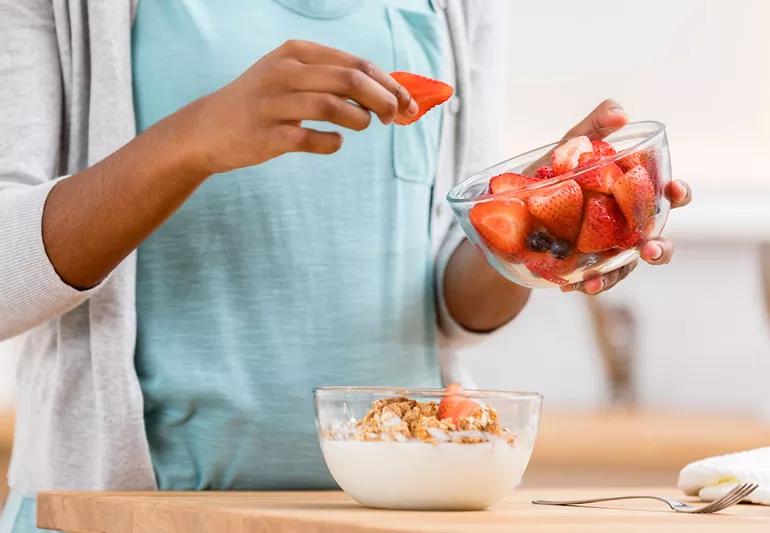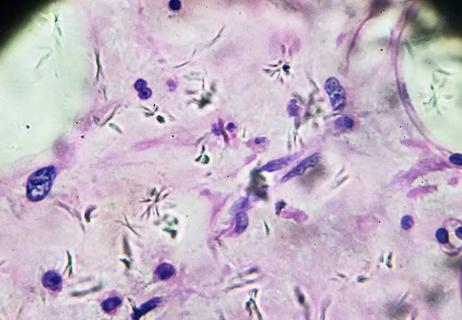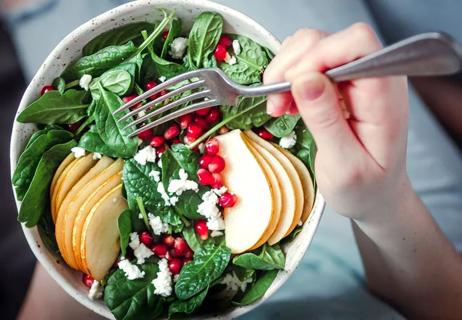Tips for better nutrition while getting cancer treatment

Advertisement
Cleveland Clinic is a non-profit academic medical center. Advertising on our site helps support our mission. We do not endorse non-Cleveland Clinic products or services. Policy
When you’re being treated for cancer, the last thing you want to think about is sticking to a diet.
I don’t ask people undergoing cancer treatment to do this — I would never overwhelm you with what you “should” be eating.
As a dietitian, my job is to set a foundation to keep you feeling as strong and healthy as possible while you’re getting treatment.
The main nutritional goals during cancer therapy include getting enough:
Every patient is different. What works for some may not work for others. If there’s a problem with swallowing or appetite, we adapt to what you find appealing and what is comfortable for you to eat.
Overall, though, our main goal is to provide calories through nutrient-rich foods.
If you don’t have nutrition-related side effects from your cancer treatment that limit your ability to eat and/or digest food, you can follow a generally healthy diet that includes:
If you suffer side effects from treatment like fatigue and digestive problems, it is helpful to include foods that take little or no preparation and are easy to eat — and easy on your stomach. I don’t mean junk food full of empty calories, but more convenient choices that still provide the nutrients you need.
Advertisement
Here are suggestions my patients tend to like:
Fresh fruit. The best choices are fruit that is refreshing, easy to eat and high in water content. Melons, berries, pineapple, bananas, pears and canned or jarred fruit in their own juices are all popular.
Yogurt. It’s easy to eat and promotes healthy digestion. Choose unsweetened varieties. You can add berries, cinnamon or slivered almonds to flavor.
Hot or cold cereal. Anything from oatmeal to steel-cut oats to oat bran are good hot choices. Prefer it cold? Your best choices include puffed brown rice, shredded wheat and granola made with ingredients you’d find in your own kitchen (no corn syrup or hydrogenated oil). Rice-based cereals are particularly good if you are having digestive difficulties.
Peanut butter or cheese. Choose whole grain crackers for fiber (if appropriate) and protein. Look for 100 percent peanut butter made without added oils.
Whole grains. Eat whole-grain breads and crackers — be sure it says “100 percent whole grain” on the package. Whole grain promotes regularity and digestive health; too much refinement can strip away fiber, protein and other nutrients.
Meats and poultry. Look for whole, unprocessed meats without nitrates. Rotisserie chicken is a convenient choice, as are chicken or tuna salad and meats/poultry softened in soups and stews. The slow cooker is a great way to prepare meat or poultry that is convenient.
Eggs (cooked). Eat only cooked eggs (scrambled, hard boiled, omelettes). Raw eggs are unsafe, even dropped into a smoothie.
Finally, preparing and cooking food safely is an extremely important piece of the puzzle. Keep in mind these tips:
Advertisement
Learn more about our editorial process.
Advertisement

It’s important to share the news in an honest and age-appropriate way

Research doesn’t show a link between the personal hygiene product and breast cancer

Carcinomas are the most common and affect skin and organs

7 healthy eating tips to help reduce your risk of some of the most common types of cancer

Research on the controversial issue is mixed, but there are safety precautions you can take

It’s not just smoking and genetics that can increase your risk of cancer

Misconceptions can be worse than reality

How to stay informed and in charge

Type 2 diabetes isn’t inevitable with these dietary changes

Applying a hot or cold compress can help with pain